The presence (and absence) of Ryuichi Sakamoto
You never feel so much the bodily presence of composer Ryuichi Sakamoto while exploring the Museum of Contemporary Art Tokyo exhibit, seeing sound, hearing time, as when he’s sitting there before you at the piano—well, at least his ghostly holographic presence is, back to the audience, conjuring up chords from an auto-playing piano that cascades shards of white upward against an ultramarine screen.
Even there—in a 1996 video collaboration with Toshio Iwai called Music Plays Images x Images Play Music—it’s Sakamoto’s absence that inhabits the surroundings. Sakamoto, who passed due to cancer in 2023, is found there in the periodic pulse of musical textures underpinning each installation of light, video, serene ripple pools, smoke boxes from the last two-plus decades—a time when the composer, who started out with quirky electronic outfit Yellow Magic Orchestra in the late ’70s and later bagged an Oscar for composing the soundtrack to Bernardo Bertolucci’s The Last Emperor, began veering into new territory: sonic textures, minimalism, and a kind of musical journey that seemed more in tune with breathing and living than with sequencers and synths.
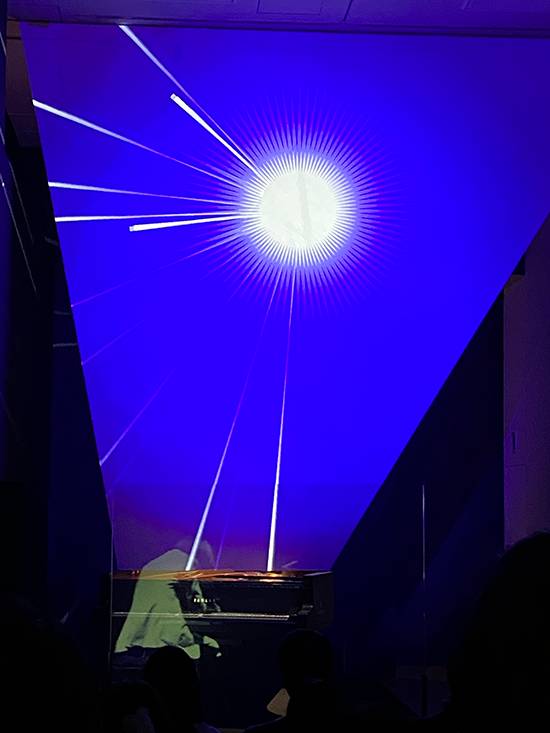
My wife is the true Sakamoto nut, luring me into his collabs with, among others, David Sylvian and David Byrne. We watched, astonished, the 2017 documentary Coda, which showed Ryuichi fighting for each day of life with a regimen of vitamins and pills, yet still spending each day gathering sounds—in one sequence, putting a plastic pail over his head during a rainfall, to listen keenly to the spatter of raindrops.
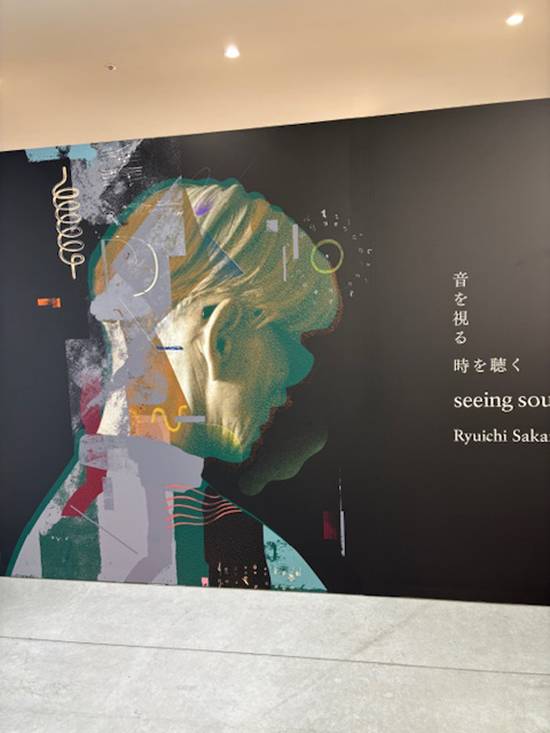
Some of this experimentation drives the sonic backdrop of seeing sound, hearing time. The exhibit moves from simple droning textures backed by dissolving images of an old man exploring a rock wall (LIFE-fluid, invisible, inaudible… with Shiro Takatani) to a pairing of stuffed museum animals and skeletons (Phosphenes: Endo Exo with Carsten Nicolai, 2024). There’s the appearance of a ghostly and battered piano under a spotlight, one recovered from tsunami waves in 2011 by the composer, who coaxed weird, solitary broken chords from its bloated wooden corpse; there’s even a split-screen video of a sleeping Tilda Swinton (either the muse or groupie of everyone from Bowie to Wes Anderson) paired with field footage of people sleeping in less-comfortable third world environments (a 2021 collab with filmmaker Apichatpong Weerasethakul called Async—first light).
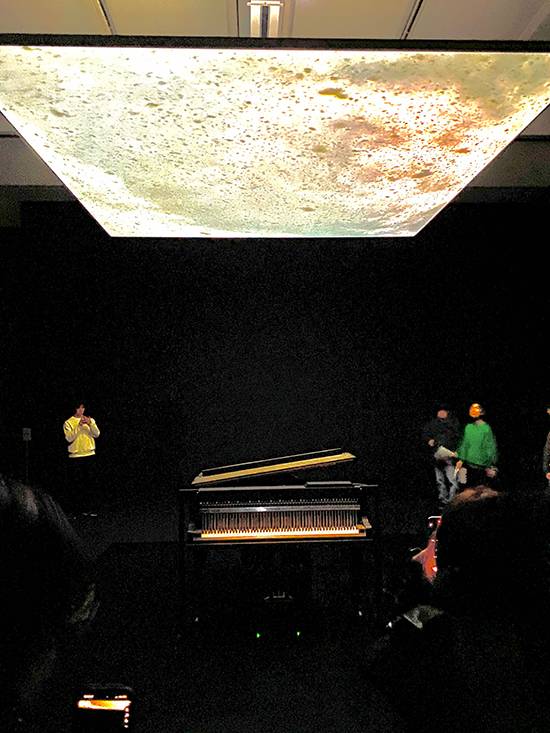
Sakamoto had a vast network of collaborators over the years. What you first take to be an amorphous art mural displayed across one wall turns out to be a chart mapping out his global connections over the years. It’s staggering.
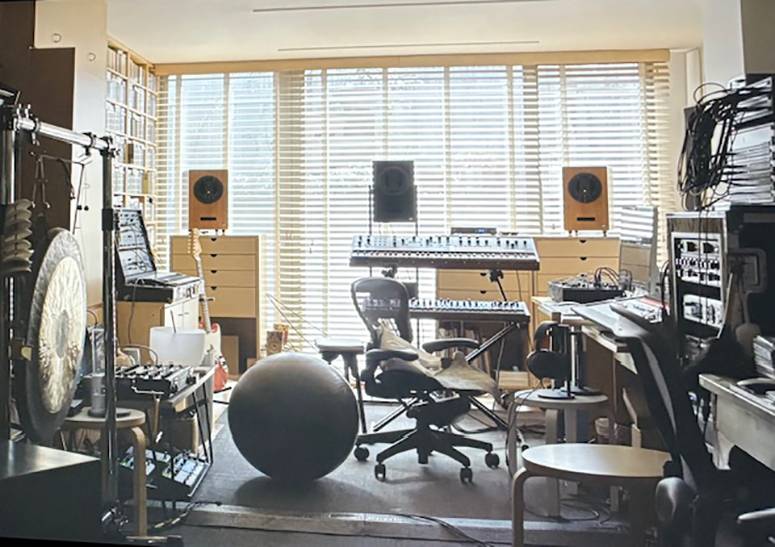
Most striking visually—besides the chance to sit at the front row of a mini concert by a holographic Sakamoto, as he plays piano pieces my wife has sought to bring to life under her own fingers—is an immersive room that extends both Sakamoto’s 1999 opera LIFE and his fluid, invisible, inaudible… collaboration with Takatani: it’s a dark room with nine water tanks arranged in a 3 x 3 grid; from the ceiling, images are projected against fog generated inside overhanging water tanks. It creates a floating immersive space below that’s echoed by Sakamoto’s drifting, flowing soundtrack.
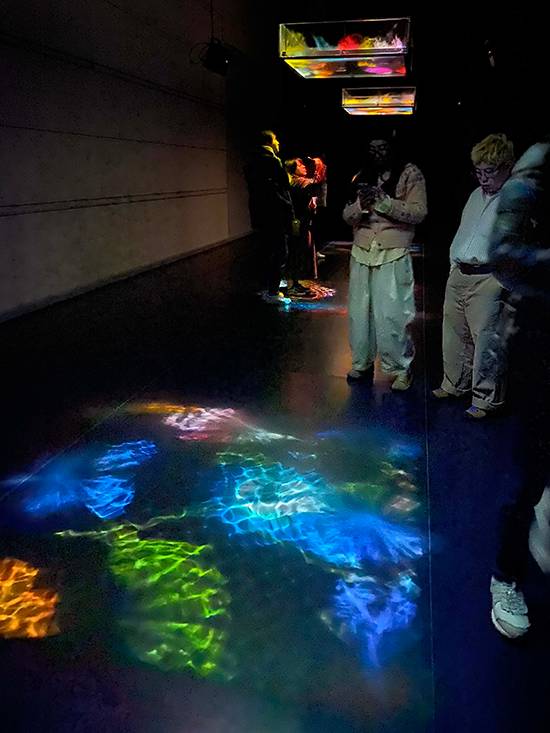
Of course, all of this is given a more intimate context in another room that simply walks us through views inside Sakamoto’s living space: small video squares show us kitchen items, houseplants, a piano, a recording nook, a garden, all absent of human presence, as though observed by the eye of a surveillance camera, yet revealing the warmth of a space inhabited by the artist.
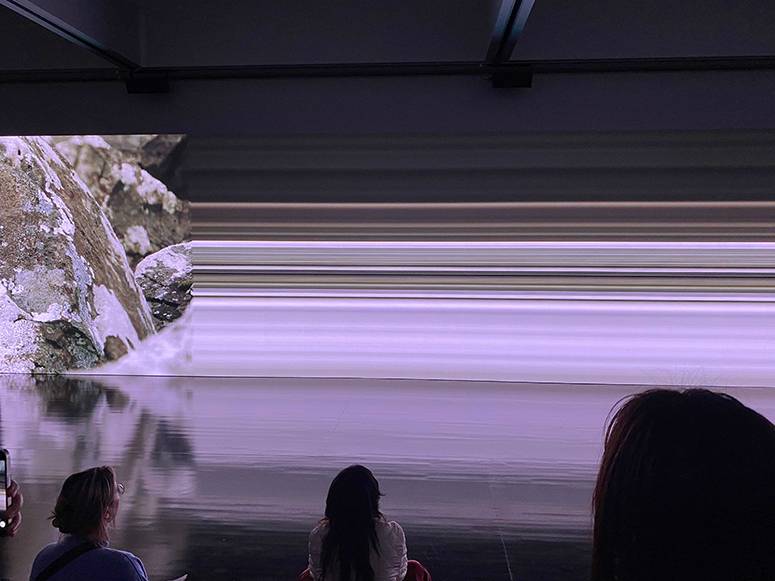
There was a feeling fans experienced when Sakamoto passed away—like an artistic spirit had surrendered his molecules to the air, his essence floating outward, but leaving behind traces, vibrations for those with the right antennae to register them. Like gentle fingerprints left on clear glass, seeing sound, hearing time evokes that feeling.
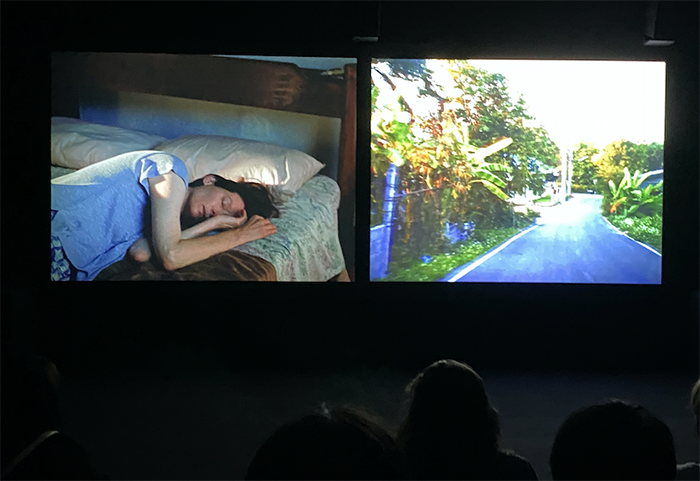
***
The Ryuichi Sakamoto exhibit seeing sound, hearing time is ongoing at the Museum of Contemporary Art Tokyo until March 30.



